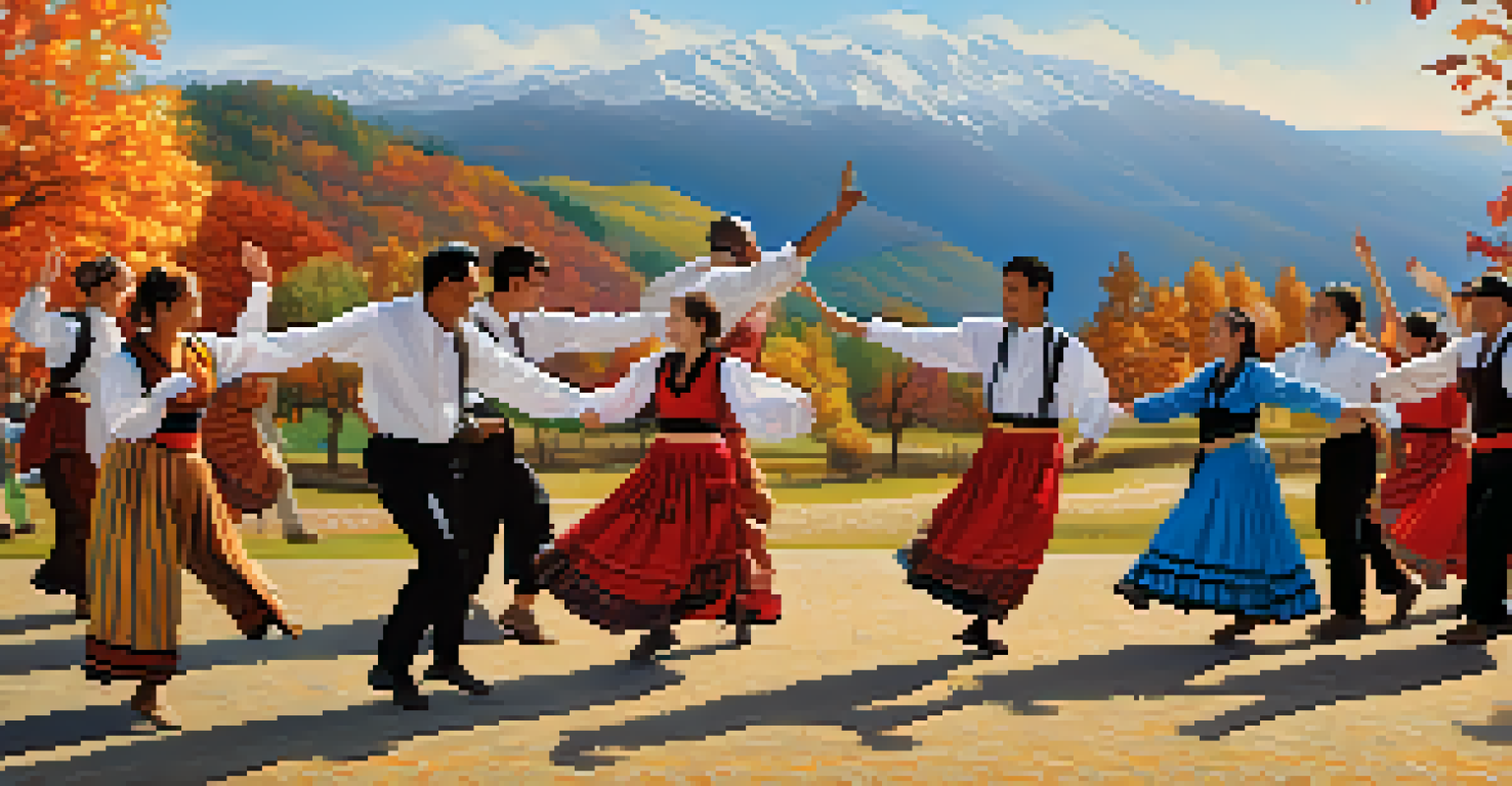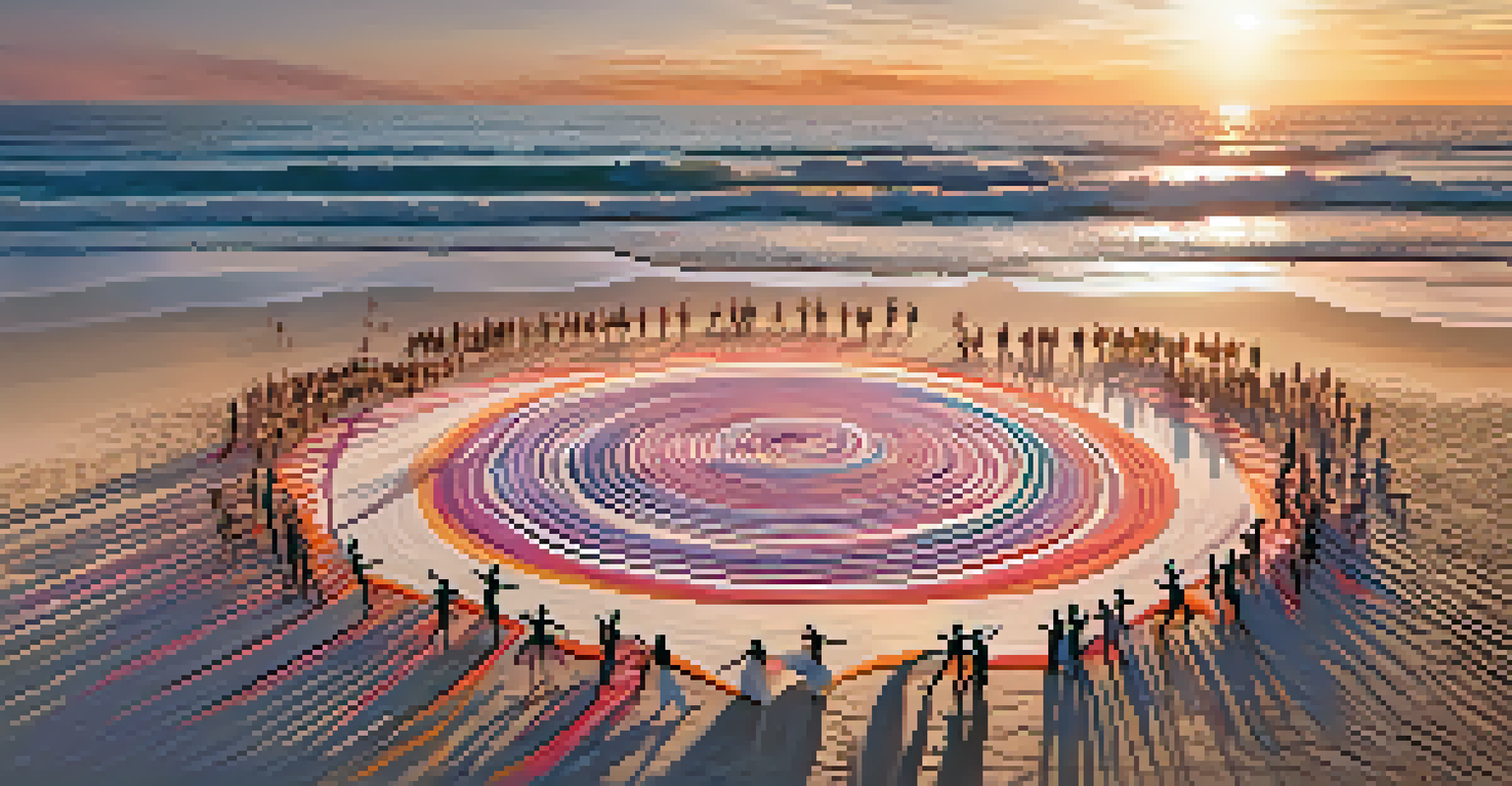The Connection Between Dance and Eco-Conscious Living

Understanding the Dance-Ecology Connection
Dance is more than just movement; it's a form of expression that can reflect our relationship with the environment. As dancers embody their art, they often draw inspiration from nature, highlighting its beauty and fragility. This connection can foster a deeper appreciation for the planet, encouraging both performers and audiences to consider their ecological impact.
The environment is where we all meet; where we all have a mutual interest; it is the one thing all of us share.
Many dance styles incorporate elements of the environment, whether it's mimicking the flow of water in contemporary dance or celebrating the changing seasons through folk traditions. By using natural themes, dance creates a dialogue about our surroundings, making it a powerful medium for raising awareness about environmental issues. This connection can transform the way we view our role in the ecosystem.
Furthermore, when dancers engage with eco-conscious practices, such as using sustainable materials for costumes or choosing performance venues that prioritize green initiatives, they set a precedent for others in the arts community. This ripple effect can inspire a broader movement towards sustainability within the performing arts.
Dance as a Tool for Environmental Activism
Dancers have long used their platform to advocate for change, and the environment is no exception. Many choreographers create works that address climate change, pollution, and conservation, transforming dance into a powerful form of activism. Through emotive performances, dancers can evoke empathy and inspire action among audiences, urging them to reflect on their environmental choices.

For instance, projects like 'Dancers for the Earth' bring together artists to perform pieces specifically designed to highlight ecological issues. These performances not only entertain but also educate, making complex topics more accessible through the universal language of movement. Such initiatives illustrate how dance can serve as a catalyst for environmental awareness.
Dance Reflects Environmental Issues
Dance serves as a powerful medium for expressing and raising awareness about our ecological impact through movement and natural themes.
Moreover, the communal aspect of dance fosters collaboration among artists and environmental organizations. By joining forces, they can amplify their message and reach wider audiences, ultimately promoting a collective responsibility toward our planet.
The Role of Cultural Dance in Sustainability
Cultural dances often celebrate the land and its resources, providing a rich context for eco-conscious living. Many indigenous and folk dances incorporate themes of farming, hunting, and seasonal changes, directly connecting communities to their environment. These traditions not only preserve cultural heritage but also emphasize the importance of living in harmony with nature.
Dance is the hidden language of the soul.
Through storytelling embedded in dance, performers can share vital knowledge about sustainable practices passed down through generations. This transmission of wisdom can empower newer generations to adopt eco-friendly habits, reinforcing the idea that sustainability is rooted in cultural identity. Cultural dances remind us that our connection to the earth is both a personal and communal journey.
Furthermore, supporting cultural dance forms can promote biodiversity and ecological stewardship. When communities engage with their heritage through dance, they often become more invested in protecting their local environments, leading to tangible efforts in conservation and sustainability.
Sustainable Practices in Dance Companies
Many dance companies are now prioritizing sustainability in their operations, from production to performance. This can include using eco-friendly materials for sets and costumes, reducing waste, and implementing energy-efficient practices in theaters. By leading by example, these organizations inspire both dancers and audiences to consider their own environmental impact.
For instance, some companies have adopted 'green' tours, where they minimize their carbon footprint by traveling in eco-friendly vehicles and selecting venues that prioritize sustainability. Such initiatives not only contribute to ecological preservation but also set a benchmark for the wider performing arts industry. These practices demonstrate that dance can thrive while being responsible toward the planet.
Choreography as Activism
Choreographers are increasingly creating works that address environmental challenges, using their art to evoke empathy and inspire action among audiences.
Additionally, workshops and educational programs that focus on sustainable practices in dance can further promote eco-conscious living. By teaching dancers about the environmental impact of their choices, companies cultivate a culture of sustainability that extends beyond the stage.
Incorporating Eco-Conscious Themes in Choreography
Choreographers play a crucial role in weaving eco-conscious themes into their works. By using movement to express environmental narratives, they can create pieces that resonate deeply with audiences. This creative approach not only entertains but also prompts viewers to think critically about their connection to the earth.
For example, a dance piece that interprets the journey of a river can illustrate the effects of pollution and climate change on water sources. Such representations can evoke strong emotions, compelling audiences to take action in their own lives. By integrating these themes into choreography, artists can make environmental issues more relatable and urgent.
Moreover, collaborating with environmental experts can enhance the depth of these performances. By incorporating scientific research and data into the creative process, choreographers can ensure that their work not only inspires but educates, bridging the gap between art and science.
Community Dance Initiatives and Eco-Conscious Living
Community dance initiatives often focus on inclusivity and engagement, making them ideal platforms for promoting eco-conscious living. These programs can foster connections among participants, encouraging them to explore environmental themes through movement. By cultivating a sense of community, dancers can collectively address sustainability issues within their local contexts.
For instance, projects that involve community members in creating dance pieces about local environmental challenges can empower individuals to take ownership of their surroundings. These initiatives not only build awareness but also inspire collective action, turning participants into advocates for the planet. The shared experience of dance can strengthen community bonds and motivate groups to work together for ecological change.
Sustainability in Dance Practices
Many dance companies are adopting sustainable practices, from eco-friendly materials to green tours, setting an example for the performing arts industry.
Additionally, community dances often take place outdoors, further enhancing the connection between participants and nature. This setting allows individuals to appreciate their environment firsthand, reinforcing the importance of preserving it for future generations.
The Future of Dance and Eco-Conscious Living
As awareness of environmental issues continues to grow, the intersection of dance and eco-conscious living is likely to expand. Dancers, choreographers, and companies are increasingly recognizing their potential to influence change through their art. This evolution suggests a promising future where sustainability is woven into the fabric of the dance community.
Emerging trends may include more collaborations with environmental organizations, increased use of technology to create sustainable performances, and greater emphasis on educational outreach. These developments can further establish dance as a vital voice in the conversation about ecological responsibility. With a shared commitment to the planet, the dance community can lead by example.

Ultimately, the future of dance and eco-conscious living will depend on the collective efforts of artists and audiences alike. By embracing sustainability, the dance world can not only thrive but also inspire generations to come to cherish and protect our planet.